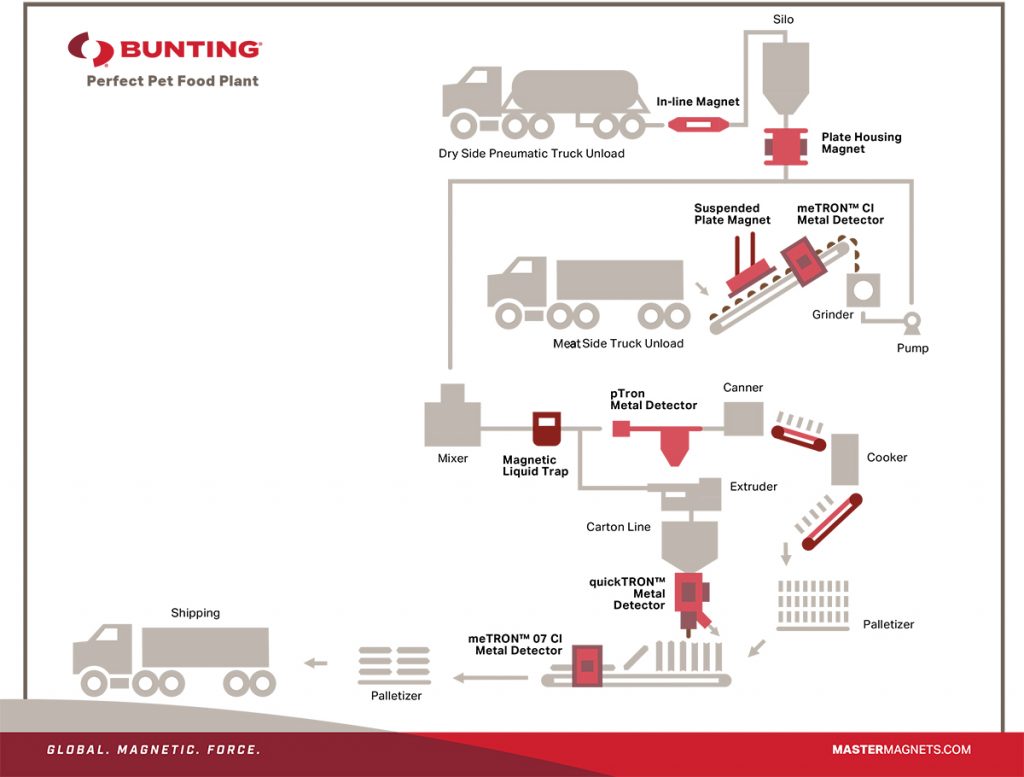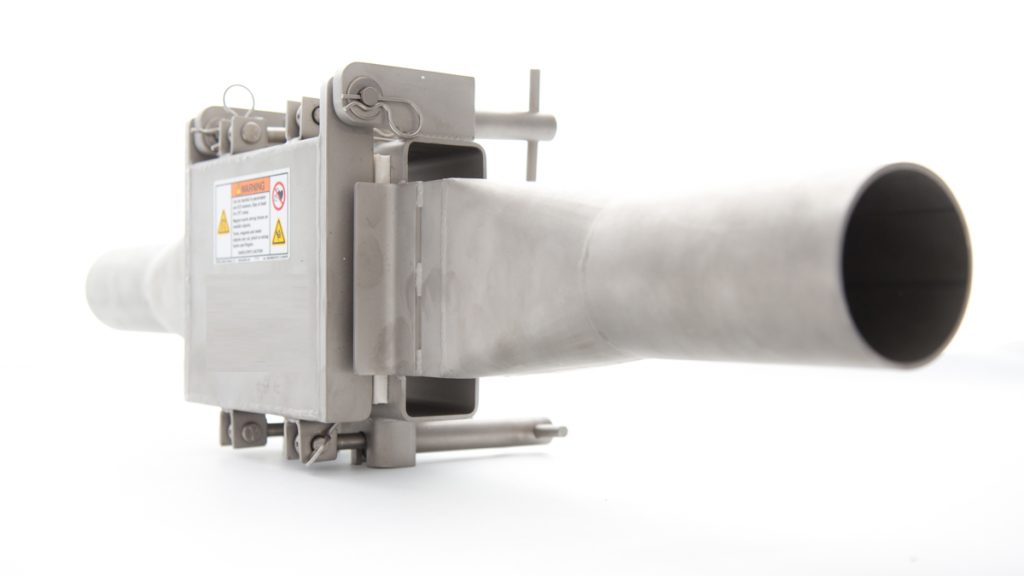Getting Metal Out of Pet Food
By Paul Fears | 23 February 2021
Ensuring Pet Food is metal free before it reaches the consumer is critical. However, reports of foods being recalled due to metal contamination occur several times each year. To assist processors and producers, Bunting has developed a series of typical plant flowsheets showing proposed locations for Magnetic Separators and Metal Detectors including a typical Pet Food Processing Plant.

The flowsheet shows material being fed into the plant through to packaging and shipment to retailers. The combination of magnetic separators and metal detectors ensures a metal-free product reaching the consumer.

Infeed Material
Dry Material Feed
On delivery to the plant, commonly from road transportation, the dry materials are pneumatically fed into a raw material storage silo. Any feed material entering the plant is possibly contaminated with metal, either originating from the supplier’s plant or during transportation. Larger tramp ferrous metal contamination (e.g. nuts, bolts, nails, etc.) is captured prior to the storage silo with a Pneumatic Inline Magnet mounted in the pipe line. The strong internal magnet attracts and holds the metal contamination. Additionally, after storage in the primary silo, the dry material passes through a Plate Housing Magnet (featuring either standard-strength Ferrite or high-strength Rare Earth plate magnets) before being mixed with any other ingredients, such as meat. This protects the mixer from costly damage and production downtime.

Meat Feed
The meat constituent commonly arrives in by road transportation, with unloading onto a feed conveyor. As with the dry materials, the process of preparing the meat and transportation may result in the introduction of metal contamination. To prevent such metal entering the production process, a Suspended Plate Magnet is positioned over the conveyor to attract, lift and remove larger tramp ferrous metal contamination.
Any non-ferrous metal contamination is detected by a meTRON C Metal Detector positioned on the feed conveyor prior to the grinder. When the Metal Detector identifies any metal contamination, an alarm sounds and the conveyor stops, allowing operators to locate and remove the metal.
The combined tramp metal safety system of magnetic separators and metal detectors ensures that the grinder is protected from severe and potential catastrophic damage from tramp metal. Even small metal passing through the grinder can cause initially undetected damage, whilst such metal contamination gets broken into multiple smaller metal fragments that feed into the mixer.

After Mixing
After mixing, the slurry mix is fed through one of two types of Liquid Pipeline Magnets. These feature ultra-strong Rare Earth Tube Magnets that project down into the flow. Smaller metal contamination (e.g. broken mixer and grinder blades, wires, etc) gets attracted to and held on the surface of the Tube Magnets. On a scheduled frequency, dictated by the level of metal contamination, the Tube Magnets are removed and manually cleaned.
Removing the smaller tramp metal at this stage protects the extruder prior to the carton packing line.
On the Carton Line
After extrusion and just prior to bagging or insertion into cartons, a quickTRON Metal Detector detects and removes any remaining smaller tramp metal, especially non-ferrous. Metal is detected and ejected from the product flow. The rejected material is either discarded or recycled. Removing the metal at this stage reduces the number of packed product rejects identified by the meTRON C Metal Detector positioned prior to palletisation. This metal detector provides a final safety check and is often requested by the retailer. However, without the stages of magnetic separation and metal detection earlier in the plant, reject levels at this final stage can be high and, subsequently, costly in terms of lost product.
Prior to Canning
As a final stage of identifying and removing smaller tramp metal prior to canning, a P-Tron Penumatic Metal Detector detects and then rejects any metal present in the enclosed pipe feeding the canner.
The type and design of Magnetic Separators and Metal Detectors and the recommended locations mentioned in this article have been determined following several decades of working with food producers and processors all over the world. Variations to plant designs and layouts mean that an onsite review by a Bunting engineer will help ascertain the best solution.
Related Metal-in-Food Technical Articles
For further information on Magnetic Separators and Metal Detectors used in removing metal contamination from pet food or for any food processing application, please visit our website or contact us on:
Email: Gordon Kerr at GKerr@buntingmagnetics.com
Telephone: +44 (0) 1527 65858


